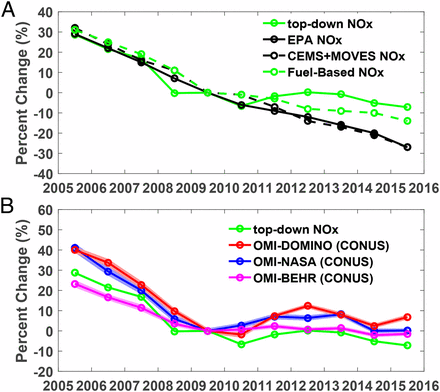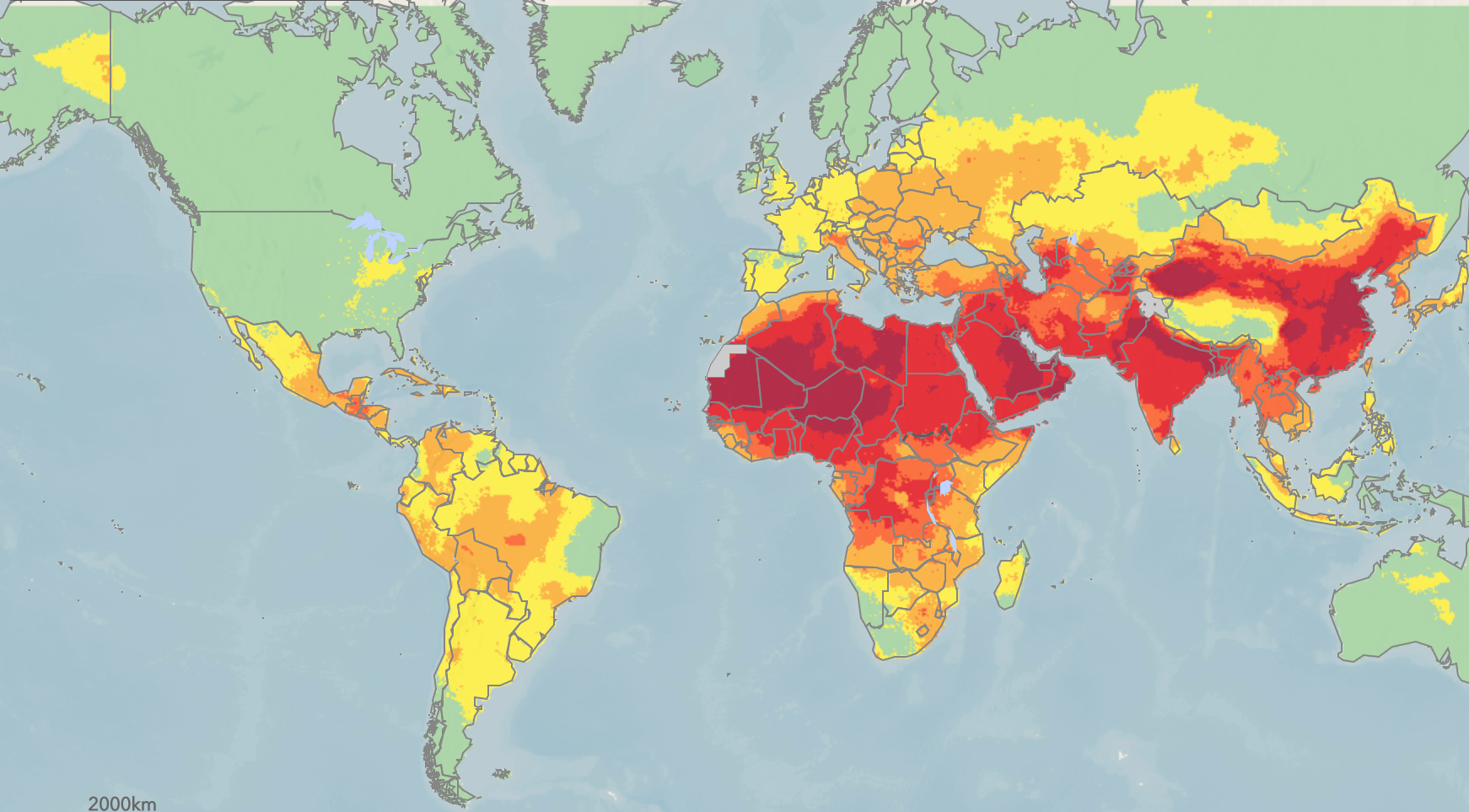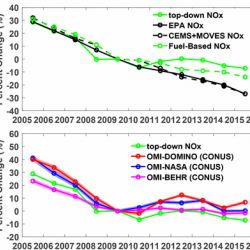A new paper in PNAS expresses concern that decades of progress in cleaning up U.S. air quality mean improvements for two pollutants have slowed in recent years.
That's to be expected. By any measure, American air quality is terrific (1), and despite the calls for more regulations on business, U.S. technology is way ahead of regulators. For example, in 2009 the U.S. government attended the United Nations Climate Change Conference in Copenhagen and pledged to reduce overall greenhouse gas emissions 17 percent by 2020. To do so, the White House directed the U.S. Environmental Protection Agency to slash carbon dioxide (CO2), which resulted in the Clean Power Plan (CPP) in 2015. That new regulation never came into force, nor was it needed. The free market has continued to cause CO2 emissions to plummet, so much so that in 2017 America reached the CPP’s desired 2025 target, eight years ahead of what government wanted.
Our huge gains in reducing emissions were not due to runaway solar or wind subsidies, those are barely a blip in energy production. It was due to modern natural gas extraction techniques such as hydraulic fracturing (fracking) which caused power plant emissions to decline from 2.7 billion tons in 2005 to 1.9 billion tons in 2017, a reduction of almost 30 percent.
There are other measures of air quality, such as the nitrogen oxides and carbon monoxide that contribute to the formation of ground-level ozone, but those also look great. Using satellite and ground-based measurements of nitrogen oxides and carbon monoxide, Jiang et al. found that more improvements will be hard to achieve using regulations. They claim the slowdown was unexpected and perhaps it was (to them) but it was no surprise to people who recognize that the curve of reduction started to flatten because there is little new improvement to be made unless we completely ban cars and jobs. And as impartial scientists noted in the 1970s, and since, ozone will still happen even as constituent pollutants drop. It will never go to zero.
Credit: Science 2.0, 2012.
The surprise of the PNAS authors is only going to happen if we don't recognize the problem with numerical models and estimates based on flawed statistics. Yes, the government can create a model showing ozone should go down in a linear fashion as individual compounds drop, but that doesn't make it a reality. And new models using their flawed estimates can claim that a flat-line of ground-level ozone and its constituents is a surprise, but only because they accepted government estimates as fact.
Ground-level ozone in the troposphere – basically what we see as smog – is created from a combination of natural sources and nitrogen oxides in the air. You can't regulate nature out of existence. The authors are worried EPA estimates were wrong. But it is making no difference in our air quality.

(
A) Percent changes (normalized at 2009) of top-down US anthropogenic NOx emission estimates from inverse analysis (green line), EPA’s emissions trends report data of NOx (black solid line), revised EPA emission estimates including CEMS and MOVES national-scale data (black dashed line, SI Appendix, Table S1), and revised industrial, on-road, off-road emission estimates using fuel-based methodologies (green dashed line, SI Appendix, Table S1). (B) Percent changes of top-down US anthropogenic NOx emission estimates and tropospheric OMI NO2 columns over CONUS. The shaded areas represent 1-σ uncertainties for random and sampling errors.
You can, of course, continue to regulate nitrogen oxide and carbon monoxide, but at some point it is making the perfect the enemy of the good. What will help instead is the continued evolution of technology by the private sector, such as three-way catalytic converters in automobiles and similar technology improvements in diesel.
Citation: Zhe Jiang, Brian C. McDonald, Helen& Worden,John
R. Worden, KazuyukiMiyazaki,Zhen Qu,Daven K. Henze,Dylan B. A.Jones,Avelino F.Arellano,Emily V. Fischer, Liye Zhu, K. Folkert Boersma, 'Unexpected slowdown of US pollutant emission reduction in the past decade', Proceedings of the National Academy of Sciences Apr 2018, 201801191; DOI:10.1073/pnas.1801191115
NOTE:
(1) Even small micron particulate matter, which was blamed by the last administration's EPA based on one data set (which they refused to share), has plummeted. And it has never killed anyone. Obviously, America is all green when it comes to real pollution but even PM2.5 is almost non-existent today, according to the World Health Organization.


No comments:
Post a Comment